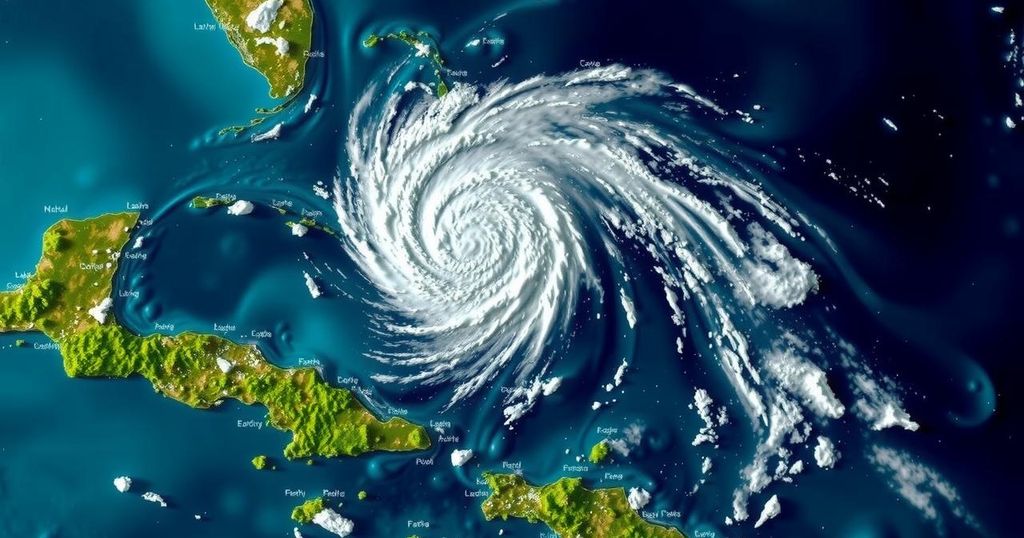Tropical Storm Rafael has intensified into a Category 1 hurricane with maximum sustained winds of 75 mph, threatening Cuba after passing Jamaica. The storm is expected to impact Cuba severely just weeks after another hurricane caused fatalities and disruptions in the region, leading to warnings about potential floods and mudslides.
On Tuesday, Tropical Storm Rafael intensified into a Category 1 hurricane, presenting a significant threat as it approached western Cuba after moving past Jamaica. With maximum sustained winds of 75 miles per hour, the storm is projected to strike Cuba on Wednesday, exacerbating the country’s ongoing recovery efforts following a recent hurricane that resulted in the deaths of at least six individuals. Currently located southeast of the Cayman Islands, Rafael poses risks of flooding and mudslides in the impacted areas, where it is anticipated to unleash heavy rainfall. The National Hurricane Center has issued warnings to residents in the storm’s path to remain vigilant and take necessary precautions against potential disaster.
The occurrence of Tropical Storm Rafael coincides with Cuba’s struggle to recover from the ramifications of another hurricane that hit the island just two weeks prior. The earlier storm led to significant disruption, including fatalities and persistent blackouts, thereby compounding the challenges faced by the Cuban populace. As Rafael advances, concerns heighten regarding infrastructure stability, emergency preparedness, and overall safety in the region.
In summary, the escalation of Tropical Storm Rafael to a Category 1 hurricane underscores the urgency of preparation and response in Cuba as it braces for another storm amidst recovery from previous disasters. With the potential for severe weather conditions including flooding and mudslides, authorities and residents alike must exercise utmost caution to mitigate risks associated with the impending hurricane.
Original Source: chicago.suntimes.com







